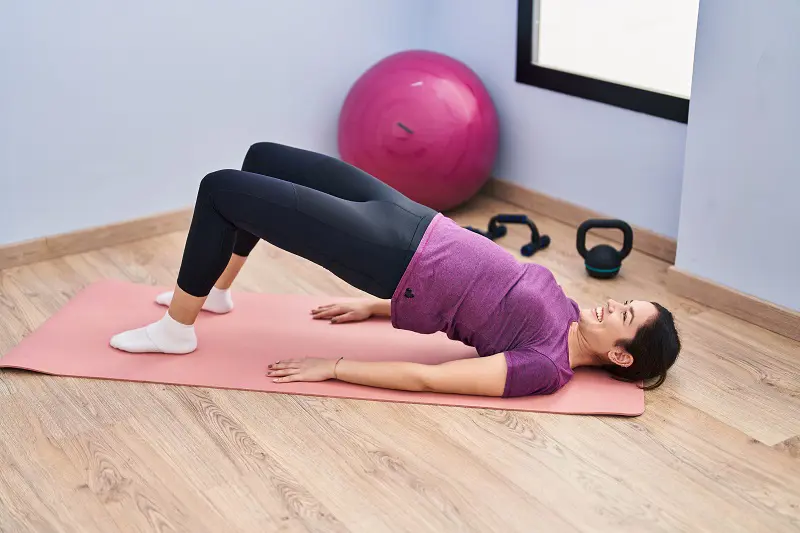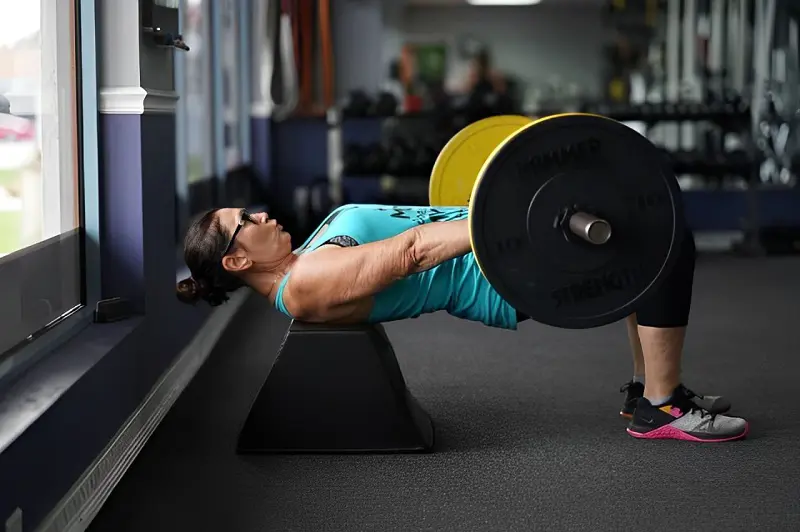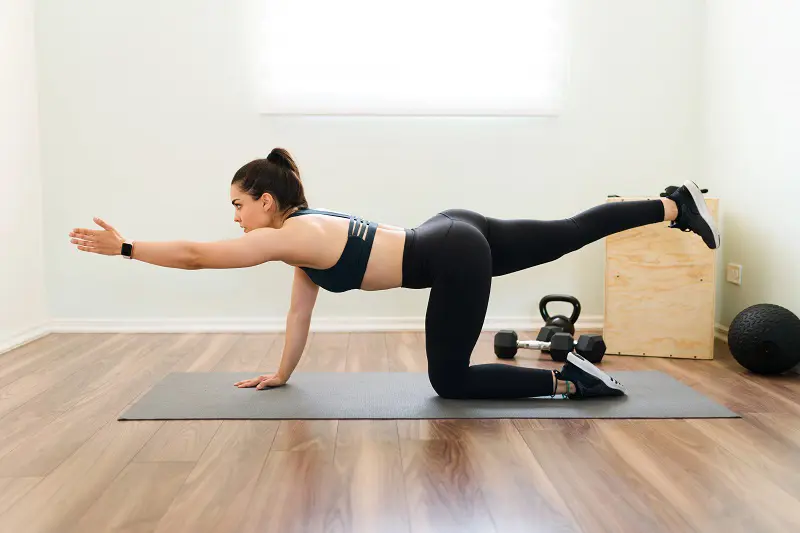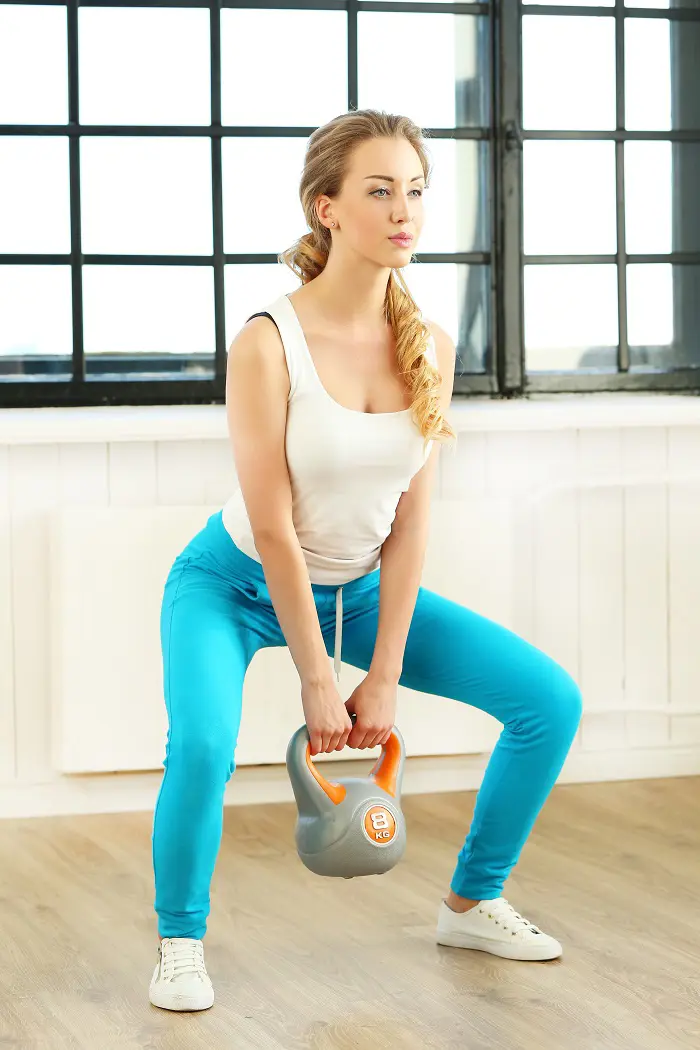How To Jump Rope: A Step By Step Guide To Skipping

Jumping rope is an easy and effective method of exercise that a person can do at home with just a rope at hand. Skipping is better at burning calories than other forms of cardio such as walking, swimming, and biking.
This guide will discuss the essential things you need to know for mastering the jump rope, from choosing the right steps to advanced techniques. Here is the step-by-step guide on how to jump rope:
1. Setting Up Your Space
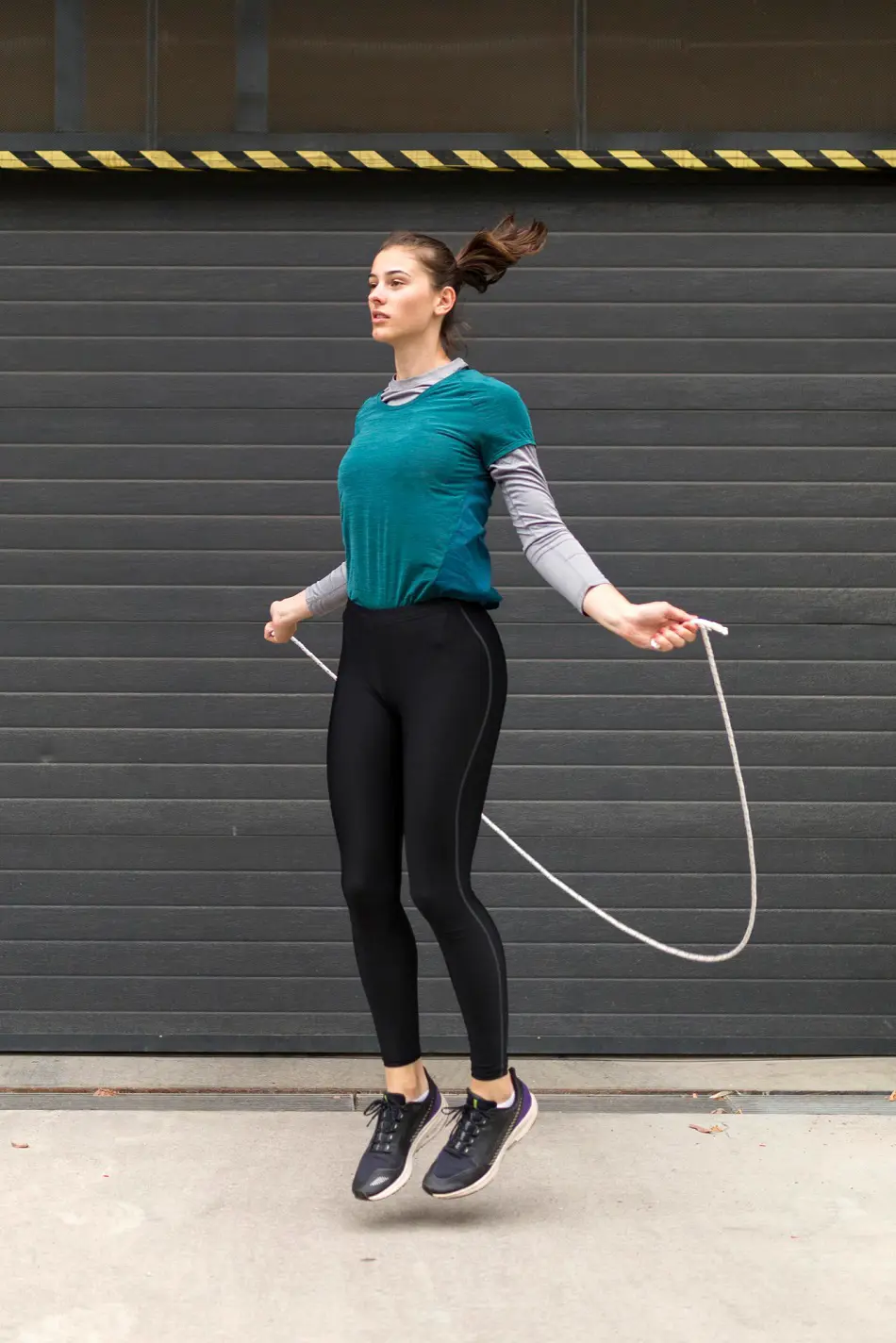
Although skipping may not demand spacious space, it is important to set some space with no distractions such as dogs, cats, and children, and you also need to give attention to the height of the ceiling.
It is common to use playgrounds for skipping as a child, but it is not ideal to use that type of surface if you aim to be pro at skipping. The concrete surface is not good as well, so you need to use carpets or mats to facilitate easy practice.
It would be ideal to practice on a rubber or suspended wooden floor that's usually present in a gym. This type of surface provides a shock absorption facility with a little bit of bounce.
2. Practice Proper Form And Breathing

As skipping is a full body activity, a proper form needs to be considered for its effectiveness. You need to bend joints a little bit during the skipping as it helps to protect ligaments and save some energy. Moreover, you need to land on your toes, not your heel, as it may hinder rhythms and impact potential improvement.
Professional ropers do not use their hand to spin the rope over their head, they use their wrists. This helps to improve the rope's momentum.
Maintaining a rhythm of breathing while skipping helps to perform for more time, keeping you energized throughout the skipping. Inhaling and exhaling with the ups and downs of the rope helps you perform better.
3. Master The Basics First
It may be enticing to want to skip ahead and take more advanced steps such as one-foot hops and crisscrosses, but this can be dangerous for new learners. Here are some of the moves that you can perform in a jump rope:
- Single Bounce Step: This is the basic way to jump rope where you simply bounce once for each revolution of your skipping routine. This teaches timing, rhythm, and coordination. All of them are needed for more complex techniques.
- The Jog Step: It's a basic jumping jack move that recreates the soft jogging action with each jump. Learning this helps with endurance and footwork.
- Skiers: This is an intermediate move that enables you to jump side-to-side for agility and equilibrium.
- Side swings: A simple move where you need to move to the side, Side Swings give you an opportunity for movement other than up/down jumping.
Start with the beginner moves first, and add more difficult techniques such as crisis crosses or one-foot hops to give your jump rope skills a boost without jumping into deep water right away.
Basic moves are the key to building a strong foundation for advanced steps. All simple basic jumping patterns can grow into more elaborate tricks later on, making this an injury-free way of progressing through your jump rope journey.
4. Keep Track Of Your Progress
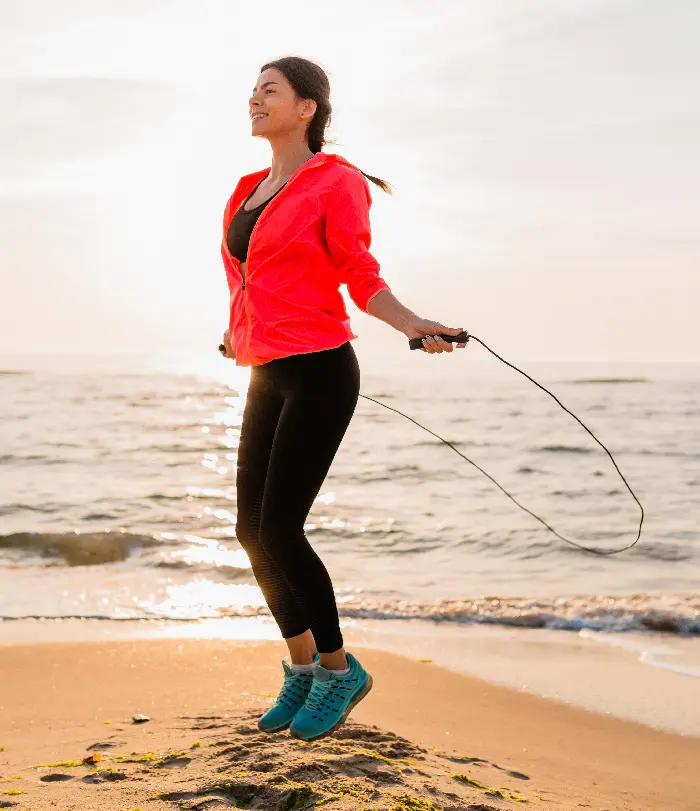
Using various methods of tracking, such as tracking apps, notebooks, and annual counting, you can keep track of the progress of skipping. It is very important to monitor results and improve performance.
What things should you note down? You may keep note of the duration of the activity, the types of skipping you complete, and rating your performance as they can be used fully for self-assessment.
How Long To Jump Rope?
For beginners, they can begin with a 1 to 5-minute session of skipping, three times a week. The beginners can gradually increase the time and intensity as they get comfortable with the exercise. Pro skippers can perform more frequently and can jump for 15-20 minutes through 3 to 5 sessions per week.
Jumping rope for a longer time can help to increase the strength and endurance of the body. It is important to maintain proper timing with the right technique for better performance and results. 20 to 60 minutes of sessions may put a lot of pressure on the skipper, so it is crucial to have proper sessions and develop endurance over time.
How To Choose Jump Rope?
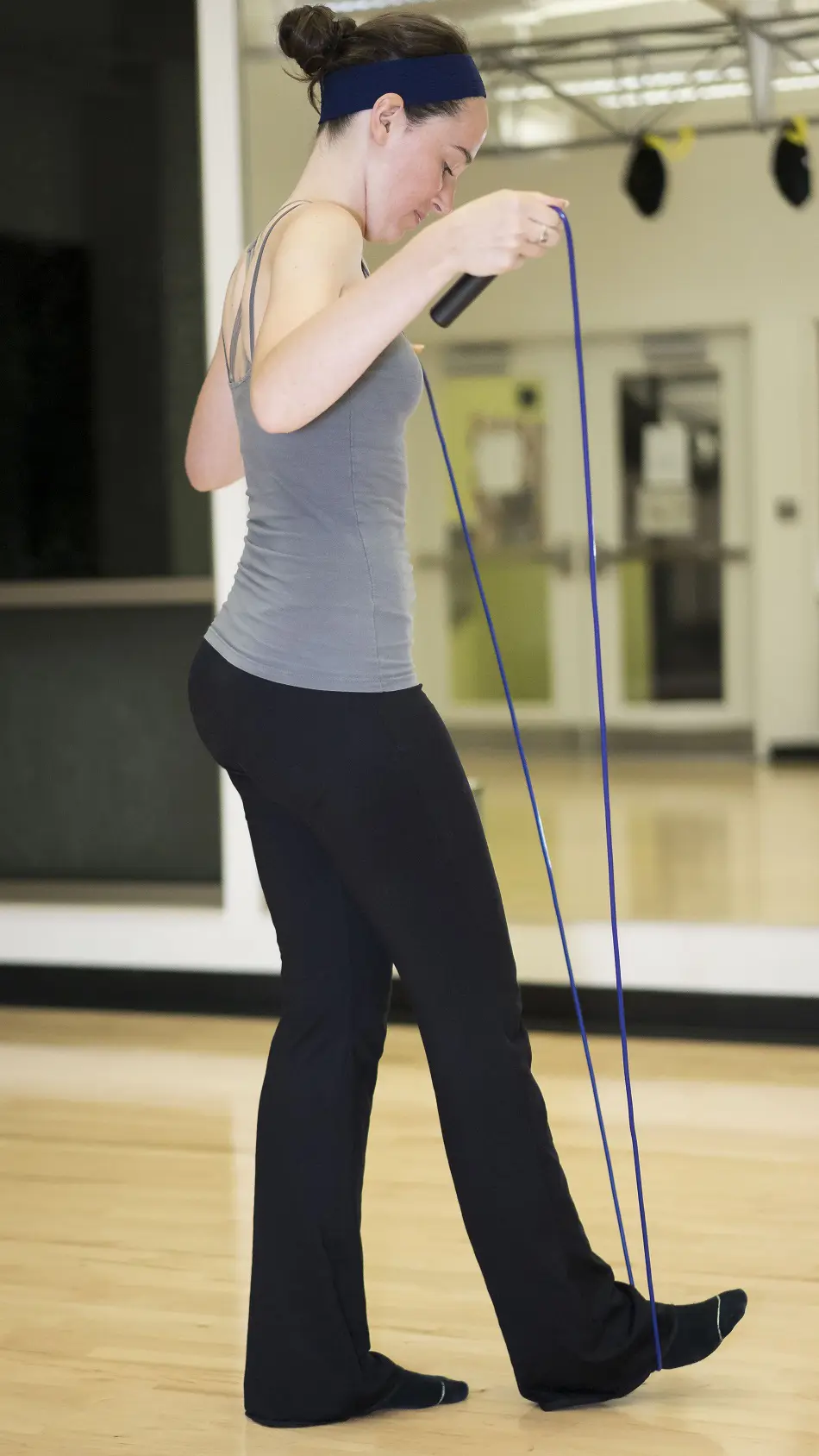
Several factors may affect the efficiency and effectiveness of rope during skipping so it is important to learn how to size jump rope. Learn to choose the correct jump rope based on its length, weight, snap, construction, adjustability, and handles. Use the following points to choose a jump rope to better suit your preferences.
1. Length
To choose the correct length of the rope, place your legs in the middle of the rope. If both handles reach your armpit, then it is good to buy that jump rope. Otherwise, you need to adjust the rope manually.
Moreover, after you practice the rope, you may need to make certain adjustments to it. In such a case, you can make adjustments for the right tune and comfort in slipping.
2. Weight
As per the discussion of choosing lightweight rope or weighted rope, it may be different per the person's needs. People who like the sound of snaps and want to exercise their arms may want to use weighted rope.
On the other hand, people who want to do only cardio from rope or just want to chill by doing rope may use lightweight rope.
3. Quality
In the market, there are lots of cheap quality ropes that may harm your journey to learn to skip with ease and hamper your motivation.
You can find the highest quality ropes for between 10 and 15 dollars. You just need sense to choose the right rope. You can consider a rope made of PVC, steel, cloth, or nylon according to your needs. You can use old ropes and bags to make DIY jump ropes at home.
4. Handles
Strong and comfortable grip are some important specifications that every rope handle needs. This will help maintain easy skipping to facilitate practice.
Without a proper grip, it may bend, wrap, and even snap the rope, making it harder to use the equipment.
Variations Of Rope Skipping
After you master the basic rope skipping steps, you can add variations to the jump rope workout that include more advanced steps. Here are some of the advanced jump rope variations:
1. Backward Steps
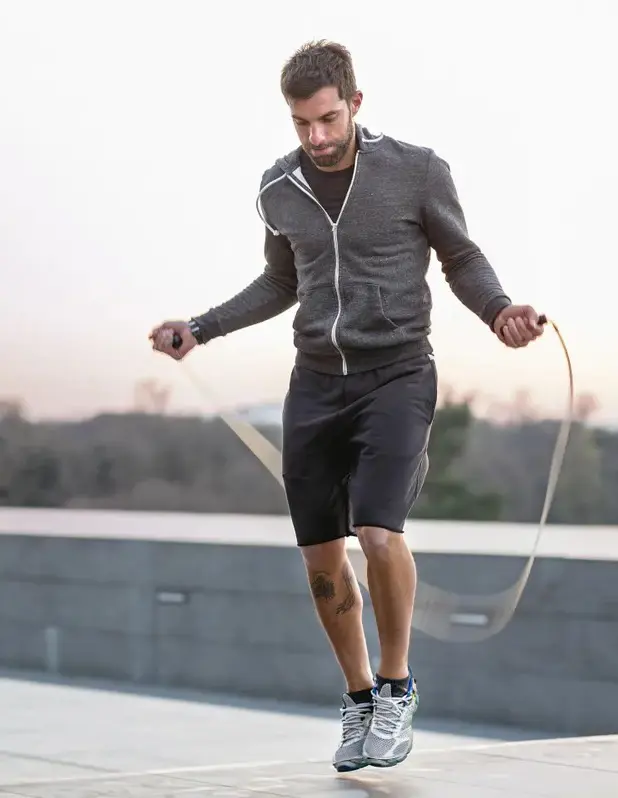
Reverse jumping rope is challenging to continue for a prolonged period. However, it improves coordination and reflexes with the swing of the ropes behind you. This movement is very foreign to most and it allows you to utilize different muscle groups like the calves, hamstrings, and shoulders in a way that might feel strange.
Backward stepping can spice up your workout routine and may enhance muscle coordination, balance, and agility.
2. Cross-Step
Cross-step jumping with one foot crossing over the other whilst in mid-air develops agility, and trains directional awareness on how we move around each other. This exercise helps to improve coordination between the upper and lower body since the rope must clear at both your feet simultaneously.
This is perfect for improving your body's rhythm, balance, and leg muscle endurance. This technique adds a new flair to the usual jump rope, and you can include it in your daily workout routine.
3. Scissor Steps
The Scissor Step is when you perform the scissor movement in place by stepping forward and backward with both feet. This exercise is great for working on leg endurance and strength as well as balance and coordination.
You hit the calves, quads, and hamstrings for a full workout geared towards your lower body to ensure that you get the most out of each Scissor Steps session.
4. One-Foot Hop
It is a perfect balance exercise that strengthens the stabilizing mechanism from a closed chain and challenges single-leg stability by having you jump onto one leg with the other being suspended.
This exercise is great for stability and proprioception, especially in the calves and ankles. Alternating your feet will help prevent uneven muscle development and improve balance and coordination.
5. Boxer Skips
Boxer Skips is footwork that mimics the light, quick-footed movements of a speedy boxer. This skipping technique rhythmically bounces weight from one foot to the other. It's great if you want to build endurance and cardiovascular fitness.
It engages your calves, ankles, and feet for strength training as well as stability in a low-impact way. Since these steps are complex and hard to do, they help to burn more calories and are more effective for overall fitness and health if properly done.
6. Two-at-a-Time Steps
This is a jump rope method that requires a bigger height on your jumps because you have to clear with both feet. All in all, this method is aimed at increasing lower body power. It also works on improving the coordination and balance of your body.
This jump rope technique is an excellent way of increasing stamina and improving the overall jump rope form.
7. Side Straddle Steps
Side straddle jumps are done by adding a lateral movement factor and engaging the core and leg muscles. It will help you with more agility, balance, and coordination.
Utilize these jump rope variants in your workout sessions periodically to get used to all of them. These variations will ensure that your workouts become more enjoyable while you benefit from these exercises.
Is Skipping Rope Good For You?

Skipping regularly is helpful for heart, bone, coordination and balance, mental health, calorie burning, and mental sharpness. This workout is quick, affordable, and effective and can be used as a single exercise to warm up.
- Full-Body Workout: Rope jumping is a full-body workout, targeting the legs and core stabilizers such as the abdominal and back, arms, and shoulders. This makes it an effective exercise for improving power strength and muscle tone.
- Cardiovascular Fitness: Jumping rope consistently improves your heart health, as it helps increase cardiovascular endurance, leads to better blood circulation, lowers your risk of developing coronary artery disease (CAD), and improves overall stamina.
- Calorie Burning: Skipping is very effective and can dramatically help in weight loss if done consistently. It can even burn more calories than running or cycling in the same period.
- Improved Coordination: When we jump rope, it keeps our hands and eyes in a rhythm which is perfect for hand-eye coordination, as well as challenging balance, all of which helps overall physical performance.
- Portable and Convenient: Because they are lightweight, jump ropes can be easily carried around. This gives you the benefit of working out from anywhere (at home or gym). This makes it a great fitness equipment to complement your lifestyle, allowing you to work out easily from anywhere.
Safety And Health Measures
Safety measures while jumping rope are critical to your long-term success. Injuries like the risks of shin splints, ankle strains, or even knee pain can be avoided by following preventive measures. Simply warm up in place before starting your endurance training so that the muscles are loosened properly and there is an increased blood flow.
It is better to use a soft surface such as a mat or wooden floor to make sure the joints are not stressed. When you come back down, try to land softly on the balls of your feet and keep a soft bend in both knees.
To avoid overstressing, gradually increase the intensity of rope skipping after initially practicing for 5-10 minutes. This action can help you to increase your endurance.
Cool Down After Rope Skipping
After exercising with jump ropes, you need to perform cool down stretches to relax your body and calm your mind. Here are some exercises you can practice to cool down after performing intense skipping:
- Standing Quad Stretch: This workout helps to loosen and lengthen the quad muscles which are responsible for the knee movement. Runners love to do these exercises to help prevent pain from tight quads.
- Butterfly Stretch: Butterfly-like stretches help jumpers increase flexibility, cool down their muscles, and help to increase endurance and strength.
- Walking: After intense skipping, walking for 5 to 10 minutes helps to increase the flexibility and stability of the body. A simple walk can prevent injuries, hence contributing to a fit and healthy body.
Recent posts
How To
How To
How To Get Rid Of Neck Hump With Exercises At Home
A neck hump is a curved appearance in the back of our neck that may lead to an unflattering look and discomfort. Also known as Dowager’s Hump or Kyphosis, this condition is often caused by poor posture, aging, or weight gain. Fixing it could ta...
How To
A Guide On How To Do Dumbbell Pullover Exercise Properly
A dumbbell pullover is a well-known strengthening exercise loved by bodybuilders for working the chest and back. It also builds your lats and triceps, making them an ideal addition to your strength workout routine. When you are in your first attempt,...
How To
How To Do Clamshell Exercise Properly For Strong Lower Body
Strengthen your glutes, core, and legs with the clamshell workout. Practicing it consistently can offer lots of benefits, from reducing back pain to improving balance. While it might seem confusing for a newcomer, this exercise is quite simple - lie ...
How To
How To Do Glute Bridge Exercise Correctly For Beginners
Glute bridge is a fantastic exercise that targets the glutes, core, and hamstrings. People practice it to strengthen their glutes, improve core stability, and even reduce back pain. To truly reap these benefits, though, we have to perform it correctl...
How To
How To Do Hip Thrusts: Methods, Benefits And Types
The hip thrust is a great bodyweight move for building strong glutes and a solid core. Also called the hip thruster, it’s great for improving posture and easing lower back pain. To get the most out of it, nailing the form is key. Everything fro...
How To
How To Do Bird Dog Exercise? Techniques, Types And Benefits
If we want to enhance core strength and spinal stability, Bird Dog is a fantastic bodyweight exercise to include in any workout routine. It activates various muscle groups like abdominals, glutes, and erector spinae. The movement itself isn’t t...



